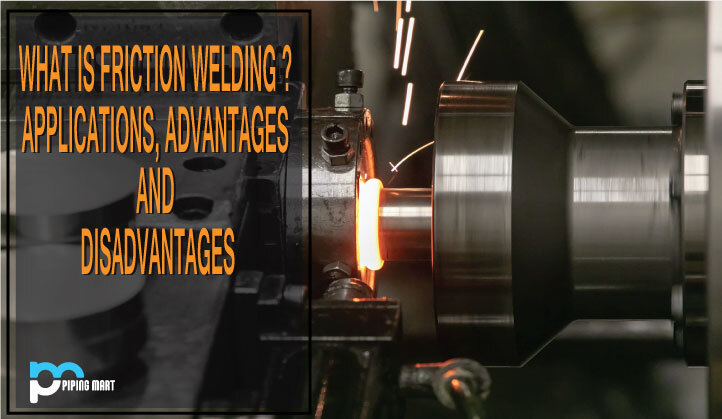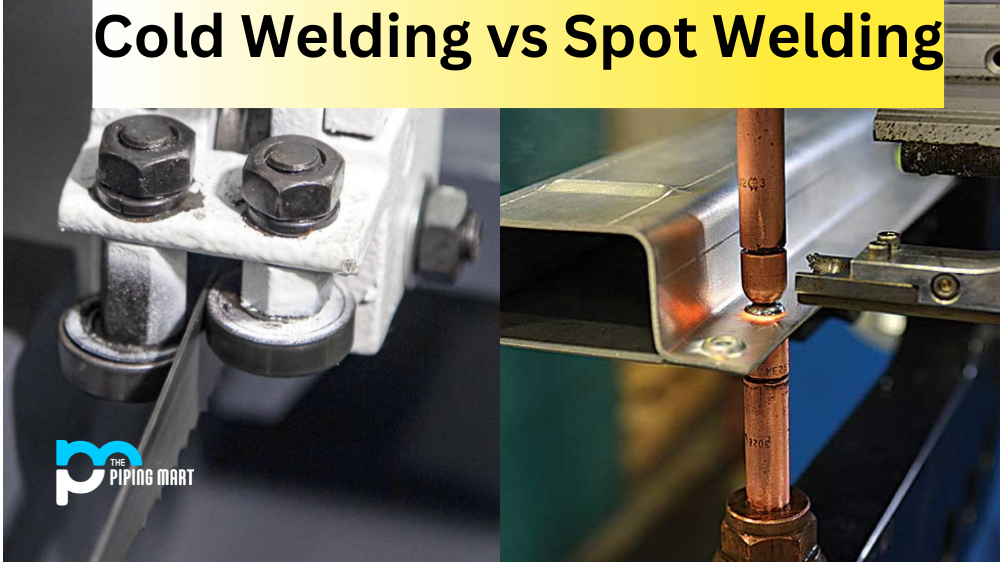Friction welding is a solid-state welding method that produces heat by mechanical friction between work parts that are in relative motion with one another, with the inclusion of literal forces that aid in the joining of the component. It is not fusion welding, but rather forge welding, so there is no melting of the material. The joint is formed as a result of the thermo-mechanical treatment of the surface that can be touched. The workpieces are joined either relative to each other or by spinning to create friction and displace the material plastically on the surface in this form of welding. To complete the weld, extremely high pressure is needed. It produces heat at the melting point of the workpiece, as previously said, to obtain when external pressure is applied to it. Friction occurs between the pieces before it becomes ceramic, which occurs at temperatures ranging from 900 to 1300 degrees Celsius for steel. At this stage, a continuously increasing friction force is applied to the work object, resulting in a permanent joint.It is becoming increasingly popular as an alternative to traditional methods, such as arc welding, due to its ability to produce high-strength joints with less distortion. Let’s take a closer look at this process.
What is Friction Welding?
Friction welding is an efficient, cost-effective method of joining two materials together. This process works by using the friction generated from the rotational force to create enough heat to create a permanently fused bond between the two parts. Many different materials can be used in this process, ranging from aluminium and titanium alloys to thermoplastic and thermosetting plastics. Friction welding yields extremely strong structural joints with superior strength compared to traditional joining methods such as riveting or spot welding – often eliminating the need for additional fasteners. Additionally, the fusion zone in friction welds can be manipulated tightly at the operator’s discretion to match specific joint designs. As a result, more complex joint shapes can be honed for enhanced mechanical properties that wouldn’t usually be possible through alternative methods.
How Does Friction Welding Work?
The friction welding process begins with two components clamped together in a tool or fixture. The parts are then rotated against each other while they are pressed together with a predetermined force until the temperature of the interface reaches its melting point. At this point, one or both parts may be further forged to achieve complete joint penetration. The entire process takes place in a single cycle and can be completed in as little as three seconds, depending on the material and size of the components.
Friction Welding is applicable in the following:
- Friction welding is used in the fabrication of tubes and shafts, naval, mining, and automotive as well as in the aircraft industries.
- It is also useful in components that require friction weldings, such as gears, axle tubes, drivelines, and valves.
- It is also used to link hydraulic piston rods, truck roller bushes, and so on. It is used to solder drill bits, connecting rods, gear levers, and other similar objects.
- Finally, it is commonly used in the electrical industry to solder copper and aluminum equipment.
6 Advantages of Friction Welding
Friction Welding has many advantages, they are as follows
Friction welding is applicable in various fields and welds many things. Friction welding is of great benefit because it helps to lessen the grain formation of high heat and strengthen steel. It also does not melt the metal while welding. Friction welding is also used in aerospace, where lightweight metals like aluminum are used.
One benefit is that the weld surface is polished as a result of the motion between the products being combined, and maximum strength is achieved in the joint with no added weight to the workpiece.
Thermoplastics are also used for friction welding. It applies very little heat and friction to the components. This has shown that this method of welding can be used to connect metals to plastics using a machined metal interface.
- Allows the joining of dissimilar materials that may otherwise be incompatible for welding using other joining processes.
- Produces a small, heat-affected zone
- There is no need for filler stuff.
- Complete metal fusion is a consistent and repeated process.
- Minimal Joint preparation
- Faster turn-around times – in comparison to forgings, which usually have lead times of 6 months or more.
- Increases product versatility significantly
- Suitable for a wide range of amounts – from single prototypes to large-scale manufacturing
2 Disadvantages of Friction welding
One of the most significant drawbacks of friction welding is the constraint on workpiece dimensions. Since circular bars with identical cross-sections are limited, joint designs are limited, and work parts must be fixed.
- Friction welding equipment is expensive.
- Welding is not possible for materials that cannot be forged.
Friction Welding Uses
Friction welding can be used for many applications, including automotive components such as exhaust systems, drive shafts, suspension arms, brake discs, connecting rods, and pistons. It can also be used for aerospace components such as wing spars, landing gear components, engine casings and turbine blades. Other common uses include pipe-laying equipment, pressure vessels, fuel tanks, turbines, nuclear industry components and railcar couplers.
Conclusion:
Friction welding is an efficient process that can save time and money compared to traditional welding techniques such as arc welding or gas tungsten arc welding (GTAW). It produces strong welds with minimal distortion due to its single-step cycle time. It is suitable for various materials, including metals, composites, ceramics and plastics. Whether you need automotive parts or aerospace components produced quickly and reliably – friction welding could be the perfect solution!

Pipingmart is B2B portal specializes in industrial, metal and piping products. Also, share latest information and news related to products, materials and different types grades to help business dealing in this industry.




